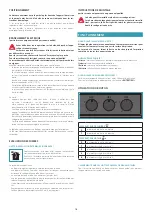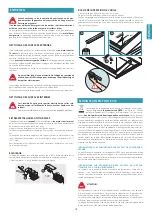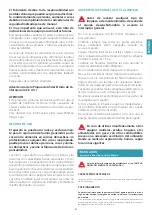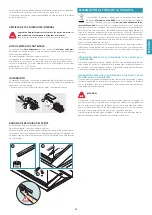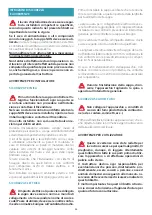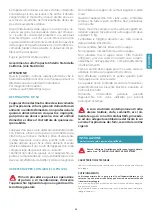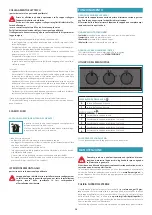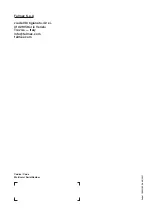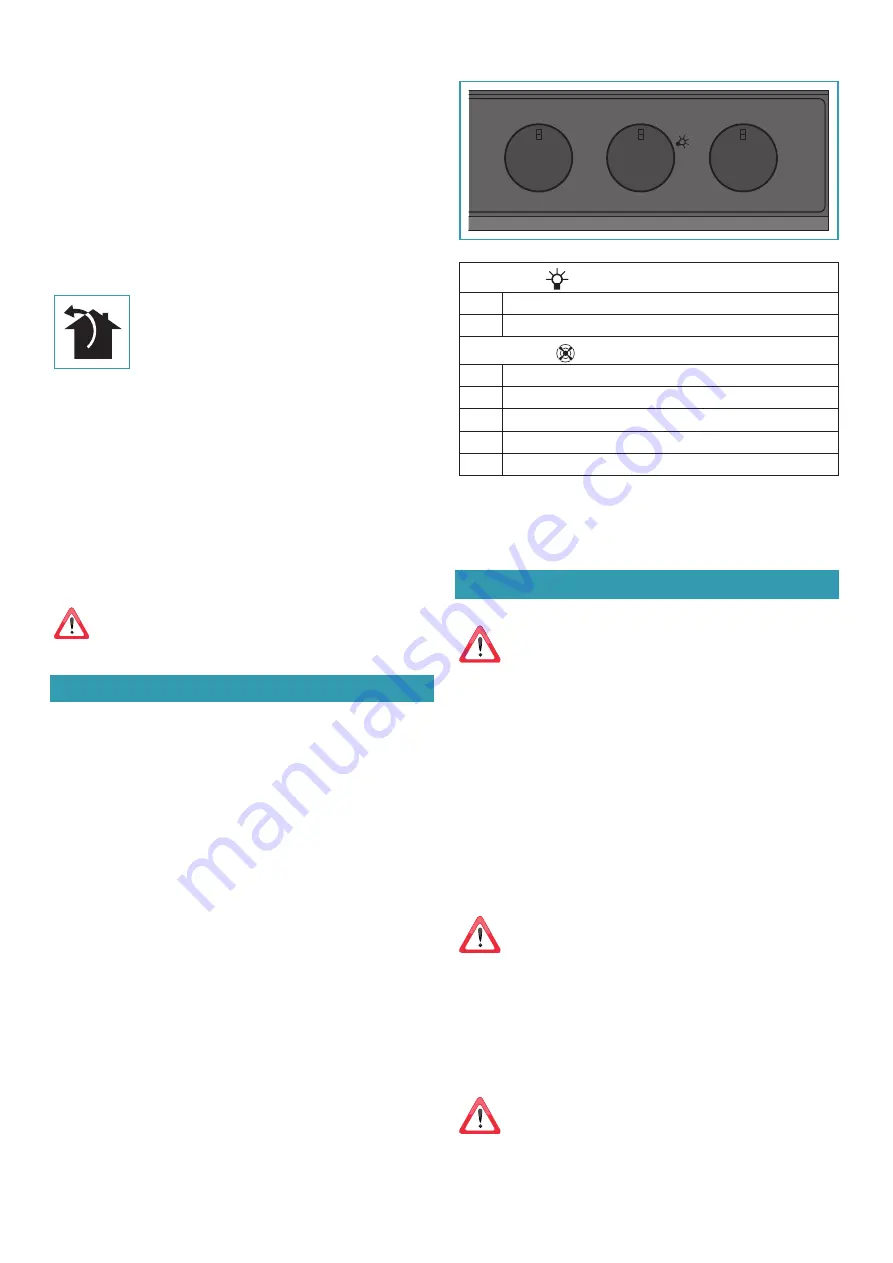
14
• fixed equipment not provided with a power supply cable and plug, or any
other device that ensures disconnection from the electrical mains, with an
opening gap of the contacts that enables total disconnection in overvoltage
category III conditions.
Said disconnection devices must be provided in the mains power supply in
compliance with installation regulations.
The cable must not be cut off by the switch.
The Manufacturer declines all responsibility for failure to comply with the safety
regulations.
FUMES DISCHARGE
EXTERNAL EXHAUST HOOD (SUCTION)
In this version the fumes and vapours are discharged outside
through the exhaust pipe.
To this end, the hood outlet fitting must be connected via a
pipe, to an external output.
The outlet pipe must have:
• a diameter not less than that of the hood fitting.
• a slight slope downwards (drop) in the horizontal sections to prevent conden-
sation from flowing back into the motor.
• the minimum required number of bends.
• the minimum required length to avoid vibrations and reduce the suction per-
formance of the hood.
You are required to insulate the pipes if it passes through cold environments.
In the presence of motors with 800m3/h or higher, a check valve is present to
prevent external air flowing back.
ASSEMBLY INSTRUCTIONS
Intended only for qualified personnel
The hood can be installed in various configurations.
The generic assembly steps apply to all installations; for each case,
follow the specific steps provided for the required installation.
OPERATION
WHEN TO TURN ON THE HOOD?
Switch on the hood at least one minute before starting to cook to direct
fumes and vapours towards the suction surface.
After cooking, leave the hood operating until complete extraction of all
vapours and odours.
WHICH SPEED IS TO BE SELECTED?
1st speed:
maintains the circulation of clean air with low electricity consump-
tion.
2nd speed:
normal conditions of use.
3rd speed:
presence of strong odours and vapours.
4th speed:
rapid disposal of odours and vapours.
WHEN SHOULD THE FILTERS BE WASHED OR REPLACED?
The metal filters must be cleaned every 30 hours of operation.
For further details refer to the
“MAINTENANCE”
section.
USE OF KNOB
OFF
1
2
3
4
OFF
1
2
3
4
OFF
LIGHT SWITCH
0
The hood light is off
1
The hood light is on
MOTOR SWITCH
0
The hood motor is off
1
The hood motor is set at 1 speed
2
The motor is set at 2 speed
3
The motor is set at 3 speed
4
The motor is set at 4 speed
ONLY FOR HOODS WITH TWO MOTORS
There are two knob in hoods equipped with double motor: each knob is associ-
ated with a single motor.
MAINTENANCE
Before cleaning or carrying out maintenance operations, discon-
nect the equipment by removing the plug or switching off the
main switch. Do not use detergents containing abrasive, acidic
or corrosive substances or abrasive cloths.
Regular maintenance guarantees proper operation and performance over time.
Special attention is to be paid to the
metal anti-grease filters
: frequent clean-
ing of the filters and their supports ensures that no flammable grease is accu-
mulated.
CLEANING OF EXTERNAL SURFACES
You are advised to clean the external surfaces of the hood
at least once every
15 days
to prevent oily substances and grease from sticking to them. To clean
the brushed stainless steel hood, the Manufacturer recommends using "Magic
Steel" wipes.
Alternatively
and for all the other types of surfaces
, it can be cleaned using a
damp cloth, slightly moistened with mild, liquid detergent or denatured alcohol.
Complete cleaning by rinsing well and drying with soft cloths.
Do not use too much moisture or water around the push button
control panel and lighting devices in order to prevent humidity
from reaching electronic parts.
The glass panels can only be cleaned with specific, non-corrosive or non-abra-
sive detergents using a soft cloth.
The Manufacturer declines all responsibility for failure to comply with these in-
structions.
CLEANING OF INTERNAL SURFACES
Do not clean electrical parts, or parts related to the motor inside
the hood, with liquids or solvents.
For the internal metal parts, see the previous paragraph.


















